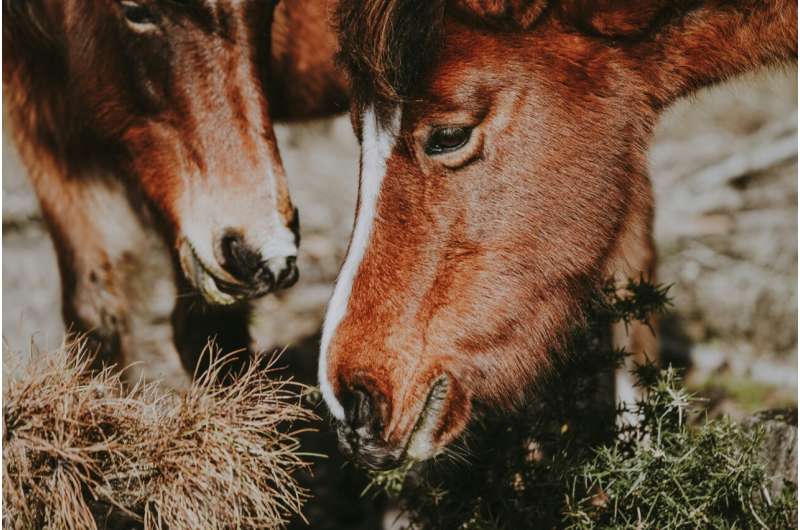Analyzing horse facial expressions can help us better understand equine emotions and welfare

Stephanie Baum
scientific editor

Andrew Zinin
lead editor

Scientists from the University of Portsmouth's Center for Comparative and Evolutionary Psychology have created the first anatomically-based descriptions (ethogram) of equine facial behavior, mapping how horses use their faces to communicate emotions like playfulness, aggression, curiosity, and attention.
The full ethogram (database) and analyses are in PeerJ, offering a valuable resource for researchers and practitioners.
Using the , researchers catalogued 805 facial displays across 22 distinct behaviors, ranging from friendly interactions and play to conflict. Each facial movement was linked to specific muscle actions, allowing for precise, objective coding. The team also applied a new statistical tool to analyze how these expressions cluster in different social contexts.
"This is the first time we've been able to systematically document how horses combine facial movements into meaningful expressions," said Dr. Leanne Proops, Associate Professor in Animal Behaviour and Welfare. "It opens up new possibilities for understanding equine emotions and improving welfare."
The study revealed that horses use a variety of facial cues depending on the situation:
- Agonistic interactions: Aggressive encounters are characterized by flattened, backward-facing ears, raised inner brows, dilated nostrils, and lowered heads. These expressions serve as clear signals of aggressive intent, allowing someone to anticipate and avoid potential conflicts.
- Attentional states: When horses are alert or investigating stimuli, their ears are typically forward and adducted. Additional indicators include increased blinking and half-blinking, as well as head positions adjusted to optimize sensory input, such as upward for visual attention.
- Friendly interactions: Contrary to common assumptions, horses often exhibit neutral facial expressions during friendly interactions. While "ears forward" is traditionally seen as a marker of positive emotion, the researchers did not see this movement regularly in this context. This suggests that a lack of overt facial movement may indicate a positive mood, emphasizing the importance of considering the broader behavioral context.
- Play behavior: Playful interactions involve a dynamic range of facial movements, including depressed lower lips, raised chins, parted lips, wide-open mouths, rotated and flattened ears, increased visibility of eye whites, and noses pushed forward.

Some play expressions bear remarkable similarity to the open-mouth play faces observed in primates and carnivores, suggesting a deep-rooted evolutionary basis for such behaviors across mammalian species.
"We found that horses often use the same facial movements across different contexts, but the combinations and intensities vary," said Dr. Kate Lewis, lead author. "This flexibility underscores the importance of considering the whole body and context when interpreting equine behavior."
The researchers also identified a previously undocumented facial movement, designated as AUH21, involving the platysma muscle. This action, which causes the side of the face to tighten and makes the underlying structures become more prominent as a consequence, has only been observed in humans and gibbons within species with existing facial action coding systems. Its discovery may enhance cross-species comparisons and aid in assessing emotional states and pain in horses.
With nearly 60 million horses worldwide, this research has significant implications for equine welfare, training, and veterinary care. By providing a detailed framework for interpreting facial expressions, it can help handlers and professionals better understand and respond to horses' emotional states.
"This work is a game-changer for anyone working with horses," said Dr. Proops. "It gives us a new lens through which to view and interpret their behavior, ultimately leading to better care and stronger human-animal relationships."
More information: Kate Lewis et al, An ethogram of facial behaviour in domestic horses: evolutionary perspectives on form and function, PeerJ (2025).
Journal information: PeerJ
Provided by University of Portsmouth



















